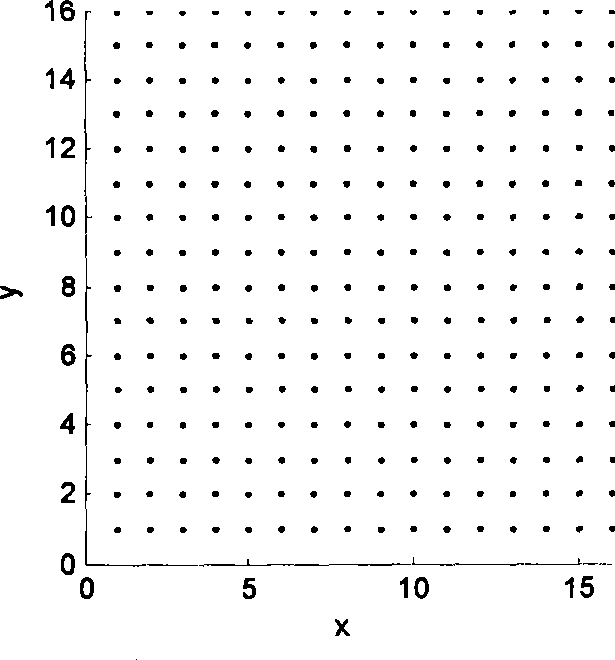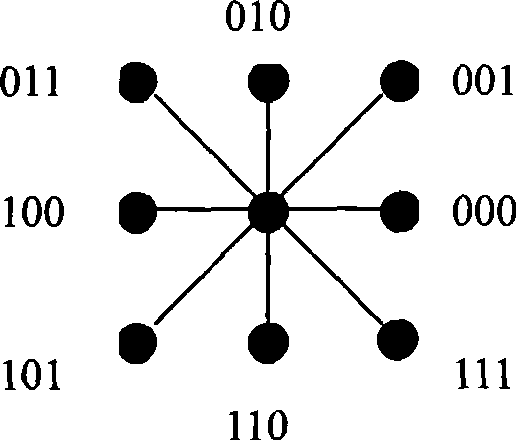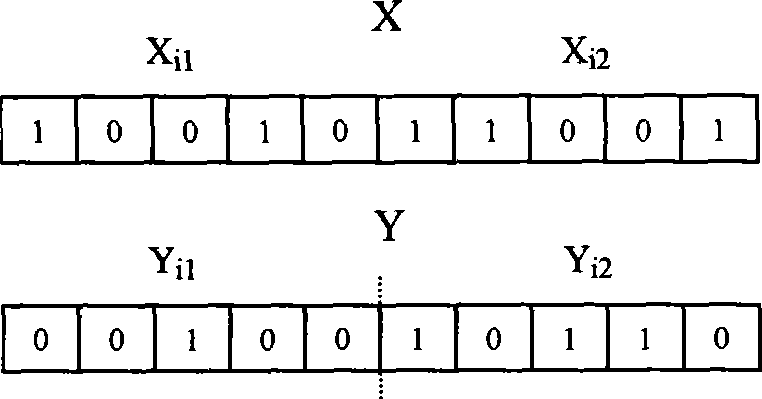Mobile robot path planning method based on binary quanta particle swarm optimization
A quantum particle swarm and mobile robot technology, applied in the field of mobile robot path planning, can solve problems such as uncertain mobile robot path planning, and achieve simple process, easy implementation, and good robustness
- Summary
- Abstract
- Description
- Claims
- Application Information
AI Technical Summary
Problems solved by technology
Method used
Image
Examples
Embodiment 1
[0035] Embodiment 1: the mobile robot path planning method based on the binary quantum particle swarm algorithm of the present invention comprises the following steps:
[0036] 1. Simplify the robot into a point that can move in two-dimensional space. It can perceive its current posture and the position of obstacles through the visual system; and the obstacles that the robot can perceive are processed into two-dimensional space. Convex polygon.
[0037] 2. The person who determines the grid granularity according to the size of the robot itself is small, and uses the grid method to establish the environment model of the robot, that is, the discrete state space. The established style is as follows figure 1 ;
[0038] 3. Determine the encoding method of the eight directions in the discrete space, that is, use binary encoding, such as figure 2 ;
[0039] 4. Determine the objective function of the problem, that is, define the length of the path from the starting point to the ta...
Embodiment 2
[0052] Such as Figure 7 , 8 As shown, the working area of the robot is a 16×16 moving space with obstacles, the starting point of the path is (1, 1), and the end point is (16, 16). In the algorithm, the particle population is set to 30, 4×4×16= 256, α is set to 0.6.
Embodiment 3
[0054] Such as Figure 9 , 10 As shown, the working area of the robot is a 16×16 moving space with obstacles, the starting point of the path is (4, 12), the end point is (16, 16), and the particle population is set to 30 in the algorithm, 4×4×16= 256, α is set to 0.6.
PUM
 Login to View More
Login to View More Abstract
Description
Claims
Application Information
 Login to View More
Login to View More - R&D
- Intellectual Property
- Life Sciences
- Materials
- Tech Scout
- Unparalleled Data Quality
- Higher Quality Content
- 60% Fewer Hallucinations
Browse by: Latest US Patents, China's latest patents, Technical Efficacy Thesaurus, Application Domain, Technology Topic, Popular Technical Reports.
© 2025 PatSnap. All rights reserved.Legal|Privacy policy|Modern Slavery Act Transparency Statement|Sitemap|About US| Contact US: help@patsnap.com



